Wave maker: why it important, the bestsellers, and installation
Waves are an integral part of any wild aquatic ecosystem. It creates water movement that circulates the much-needed oxygen and nutrients. Wind, tidal fluctuation and differences in bottom topography are the main reason why waves form. But can we have waves in an aquarium setting? Do we need wind or a sloping substrate? NO. All you need is a wave maker.
Wave makers are recommended for reef tanks as saltwater fish and corals need good water circulation. If you are a reef aquarist or would-be reef aquarist, read along as we present to you the wave-making powers of a wave maker.
- Best aquarium wave makers
- Benefits of wave makers in an aquarium
- How to choose wave makers by tank size?
- Aquarium wave maker reviews
- Hygger Mini Wave Maker Magnetic DC Powerhead
- Fluvial Sea CP3 Circulation Pump
- AquaIllumination AI Nero 3 Submersible Wave Maker
- Uniclife W-40 Controllable Wave Maker with controller
- Current Dual eFlux Aquarium Wave Pump
- Hydor Koralia Nano Aquarium Circulation Pump
- Sun Super Aquatic JVP-102A, budget option
- Jebao CP-90 Cross Flow Pump Wave Maker
- Aqueon Circulation Pump 950
- Freesea Aquarium Wave Maker with Magnet Suction
- Marineland Maxi-Jet Pro Pump for Aquariums
- How to set up a wave maker?
- Frequently Asked Questions
- Bottom line
Best aquarium wave makers
| Model | Our rating | Flow rate | For tank | Controller | Mounting | Other sizes |
 |
 Hygger Mini Wave Maker #ad Hygger Mini Wave Maker #ad |
1600 GPH max | nano reef 3-25 gallons | wave (timing, speed, pattern, frequency), feeding | magnet mount | 2600 GPH for 26-55 gallon reef tanks |
 |
 Fluvial Sea CP3 #ad Fluvial Sea CP3 #ad |
740 GPH | up to 50 gallons, freshwater or saltwater | no | suction cup | CP1 – 265 GPH, CP2 – 425 GPH, CP3 – 740 GPH, CP4 – 1,375 GPH |
 |
 AquaIllumination AI Nero 3 #ad AquaIllumination AI Nero 3 #ad |
2,000 GPH max | 50-75 gallon reef | mobile app control | magnet mount | Nero 5 - 3000 GPH #ad |
 |
 Uniclife Controllable Wave Maker #ad Uniclife Controllable Wave Maker #ad |
1300-3400 GPH | 60-150 gallons | wave (speed, pattern, frequency), light sensor, feeding | magnet mount | W10 – 1,058 GPH, W25 – 2,100 GPH |
 |
 Current Dual eFlux Wave Pump #ad Current Dual eFlux Wave Pump #ad |
1,050 GPH | 70 gallons saltwater (or 110 Gal freshwater) | remote control | magnet mount | 660 GPH and 2,100 GPH |
 |
 Koralia Nano 240 #ad Koralia Nano 240 #ad |
240 GPH | nano reef 10 – 15 gallons | buy separately | magnet mount | 425 – 565 GPH, 550 - 1,500 GPH #ad |
 |
 Sun Super Aquatic JVP-102A #ad Sun Super Aquatic JVP-102A #ad |
1300 GPH | 50-65 gallons | no | suction cup | |
 |
 Jebao CP-90 Cross Flow Pump #ad Jebao CP-90 Cross Flow Pump #ad |
2,700 – 3,300 GPH | up to 150 gallons | flow rate, wave pattern, frequency, feeding | magnet mount | CP-150 - 7500 GPH #ad |
 |
 Aqueon Circulation Pump 950 #ad Aqueon Circulation Pump 950 #ad |
950 GPH | 55 – 90 gallons | no | suction cup | 500 – 1250 GPH |
 |
 Freesea Aquarium Wave Maker #ad Freesea Aquarium Wave Maker #ad |
1,600 GPH | 40 – 80 gallons | no | magnet mount | 1050 GPH |
 |
 Marineland Maxi-Jet Pro Pump #ad Marineland Maxi-Jet Pro Pump #ad |
1,300 GPH | 40 – 65 gallons | no | suction cup | 500 GPH, 750 GPH, 1,000 GPH |
Benefits of wave makers in an aquarium
Especially the newbies, many reef aquarists are not convinced of wave makers. They use other equipment to create water motion. Further, they consider it as an additional cost. But while it really is an added cost, think of the benefits wave makers bring to your tank, like:
Mimic water current

As water is released in the wave maker, water current is created. This water current imitates the flow of water in a natural reef ecosystem. In effect, your fish will love it as they are triggered to swim. Fish can either swim with the current or against it.
Transport oxygen and nutrients
And not just fish, corals also love wave makers. With the motion of water provided by wave makers, water circulation is always guaranteed. This means that oxygen and nutrients are well distributed in your tank. This is very important for corals and other sessile or non-moving organisms. Feeding is made easy as food and nutrients are delivered to them.
Elimination of dead zones
Have you ever thought about why unwanted substances (like feces and unconsumed food) stay in one corner of your tank? This is because tanks have dead zones. These are the areas that are not reached by simple water circulation.
With the constant motion of water provided by wave makers, dead zones are eliminated. Feces, unconsumed food, and other unwanted substances will not stay in one corner. They are constantly spread out until they are captured in the filter system. Moreover, the constant flow of water guarantees that no part of your tank is left unoxygenated.
Enhanced Aesthetic Value
Without wave makers, your tank will be stagnant. Fish will not be triggered to swim actively. In addition, coral polyps may not come out as they are not stimulated to feed. With wave makers, your aquarium will transform from a stagnant tank to a well-circulated and lively tank. Fish will be triggered to swim actively. Also, corals are stimulated to feed as food is brought right to their doorstep.
Aside from tank inhabitants becoming active, the constant water motion is very pleasing to the eyes. Some claimed it can be hypnotizing. And for added aesthetic value, you can use an aquarium hood with a lighting system.
How to choose wave makers by tank size?
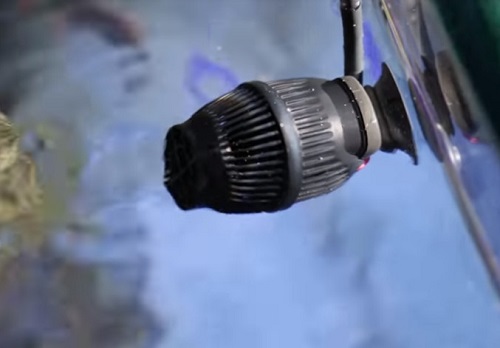
It looks good, is cheap, or has a good review. These are some of the factors that can persuade you to buy a specific wave maker. However, you should not purchase a wave maker based on price or what others say. You should choose based on the size of your tank and the type of inhabitants. As to the type of reef inhabitants, we can focus on corals, as well as other sessile organisms. Generally, they are classified as soft corals, large polyp stony corals (LPS), and small polyp stony corals (SPS).
When you have these 2 important pieces of information, then you can choose the total turnover speed. This is the frequency of water being circulated every hour. You can follow this simple guide table to determine the total turnover speed:
| Type of Reef Inhabitant | Total Turnover Speed |
| Softies & LPS | 20-30 times |
| SPS | 40-100 times |
When you have determined all the information, you can now compute for the flow rate of the wave maker you will need using this formula: Tank Size x Total Turnover Speed = Flow rate
Example: Let us say you have a 30-gallon reef tank. You are not yet sure of what type of inhabitants you will be keeping and the wave maker to use. Don’t worry. Just follow this simple guide:
| Type of Inhabitant | Total Turnover Speed | Flow rate |
| Softies & LPS | 20-30 times | 600-900 GPH |
| SPS | 40-100 times | 1,200-3000 GPH |
In other words, ONLY choose a wave maker with a flow rate that matches your tank size and the type of inhabitants. After having a list of matching water makers, that’s the only time that you consider how it will look in your tank, the price, and its product reviews.
Aquarium wave maker reviews
Hygger Mini Wave Maker Magnetic DC Powerhead

 Check on Amazon #ad
Check on Amazon #ad
- Flow rate: 1600 GPH max
- For tank: nano reef 3-25 gallons
- Controller: wave (timing, speed, pattern, frequency), feeding mode
- Mounting: magnet mount
- Other sizes: 2600 GPH for 26-55 gallon reef tanks
Small but powerful and versatile – that’s what the Hygger Mini wave maker is known for. This wave maker is small measuring only 1.9 x 1.9 x 1.6″. It is also very light weighing only 1.19 pounds. While it is small and light, it is one of the most powerful wave makers. With continuous water circulation, it creates waves that mimic ocean reef currents.
To top all, this is a smart wave maker. You can make customized waves at different periods of the day, using its smart LED controller. First, you need to set your local time in the first time of use. Then, you can freely customize the unit to achieve the most suited wave schedule for your tank. The controller allows you to custom these:
- For the time, it has 5 periods (dawn, sunrise, daylight, sunset, and night) to program.
- For the speed, you can set it anywhere from 40%, 60%, 80%, and all the way up to 100% power.
- For frequency, you can operate the wave maker using 8 different modes. 1 is the fastest frequency and 8 is the slowest in frequency.
- And lastly, it has 4 wave patterns. You can choose either the classic wave, the nutrition transmission wave, the constant stream, or the random wave.
In case you need to feed your fish and corals, this wave maker can also be programmed with a feeding mode. All you need to do is press the “F” and the unit will turn off for 10 minutes and automatically resume where it was at. This allows your fish and corals to relax and concentrate on munching in their favorite food.
This wave maker can easily be installed courtesy of its magnetic mounting. The magnetic mount gives you the liberty to place this wave maker anywhere you want in your tank. You can hide it amongst corals or in between standing structures within your tank.
Fluvial Sea CP3 Circulation Pump

 Check on Amazon #ad
Check on Amazon #ad
- Flow rate: 740 GPH
- For tank: up to 50 gallons, freshwater or saltwater
- Controller: no
- Mounting: suction cup
- CP-Series: CP1 – 265 GPH, CP2 – 425 GPH, CP3 – 740 GPH, CP4 – 1,375 GPH
The Fluvial Sea CP-Series circulation pump provides a wide wave coverage, yet through gentle streams. This European-engineered wave maker is known to stimulate an aquarium environment that mimics naturally reef current.
This wave maker has an innovative design. It is compact and does not occupy too much space. It can also increase the aesthetic beauty of your tank. The entire unit is secured through a suction cup. With high flexible mounting, you can install and reposition the unit in a matter of seconds.
Once secured and turned on, it produces a 270-degree broadcast water flow. The wave it produces is a smooth broad stream of water flow. This wave maker is ideal for reef tanks, especially if you are keeping corals.
AquaIllumination AI Nero 3 Submersible Wave Maker

 Check on Amazon #ad
Check on Amazon #ad
- Flow rate: 2,000 GPH max
- For tank: 50-75 gallon reef
- Controller: mobile app control
- Mounting: magnet mount
- Other sizes: Nero 5 - 3000 GPH #ad
Is it possible to control your wave maker with a mobile device? And while sitting on your couch watching TV? Yes, that’s possible with the use of the Aquaillumination AI Nero 3 submersible wave maker.
This 2.1″ long and x 2.8″ wide wave maker is attached and secured in the tank using a magnet mount. This magnet mount is effective up to 13mm glass thickness.
 Single-button controller and mounting magnet #ad
Single-button controller and mounting magnet #ad
Once installed, you can control this wave maker using your mobile device. Just install the MyAI App and connect with the wave maker using Bluetooth LE connectivity. With regards to the app, you can program the operation by choosing different pumping modes. You can choose between random, pulse, constant, and schedule feed.
If you don’t have a mobile device, you can still control this wave maker. Just use the pre-installed single button. By pressing the button at different time lengths, you can change the speed, mode or simply turn it off or on.
Uniclife W-40 Controllable Wave Maker with controller

 Check on Amazon #ad
Check on Amazon #ad
- Flow rate: 1300-3400 GPH
- For tank: 60-150 gallons
- Controller: wave (speed, pattern, frequency), light sensor, feeding
- Mounting: magnet mount
- Other sizes: W10 – 1,058 GPH, W25 – 2,100 GPH
This wave maker is highly controllable with the intelligent control panel included.
With its control panel, you can customize the speed, pattern, and pulse of the wave. It allows you to select 4 wave patterns, 6 power levels, and 8 pulse degrees. It also has a one-touch feed mode. By selecting this type of mode, water circulation is momentarily paused to pave way for feeding.
The most specific feature of this unit is the light sensor, which automatically switches to a night mode when your lights go down. This stimulates the natural habitat of corals at night undersea.
The unit can easily be installed through a magnet mount. Contrary to its high power rating, it operates so quietly and smoothly. Many of its users claim this wave maker is effective in preventing feces clumping.
Current Dual eFlux Aquarium Wave Pump

 Check on Amazon #ad
Check on Amazon #ad
- Flow rate: 1,050 GPH
- For tank: up to 70 gallons saltwater (or 110 gallons freshwater)
- Controller: remote control
- Mounting: magnet mount
- Other sizes: 660 GPH and 2,100 GPH
The Current Dual eflux Aquarium Wave Pump has its own intuitive IR remote control. You can remotely control the water current or choose different wave modes like surge, stream, gyre, or alternating wave currents.
With maximum value for your money, this wave maker is an all-in-one bundle. Aside from the remote control, it comes with an infrared IR sensor and a 24-volts DC power supply (with splitter and UL approved). It also comes with its own HUB & Display mounting brackets, micro-USB linking cable, wave pump foam, and wire guards.
Every model comes with 2 wave makers. Each wave maker can be secured using a magnetic mount. With its swivel arm, this wave maker can be rotated in any direction. This means that you can direct water flow anywhere you want. In case you need more water flow for SPS corals, you can simply add a third wave maker. Do not worry, the port plugs of the hub are designed to handle 3 wave makers at the same time.
Hydor Koralia Nano Aquarium Circulation Pump

 Check on Amazon #ad
Check on Amazon #ad
- Flow rate: 240 GPH
- For tank: nano reef 10 – 15 gallons
- Controller: buy separately
- Mounting: magnet mount
- Other sizes: 425 – 565 GPH, 550 - 1,500 GPH #ad
The product is specifically designed for nano reef tanks. This Italian-made wave maker has a compact design and low energy consumption. The unit has no complex gadgets. This wave maker can be securely fixed in place using a patented magnet suction cup. After attachment, just plug it and it will work on its own.
When turned on, it creates a gentle steady flow of water. This kind of water flow is ideal for a nano tank setting. But in case you want to control and customize the function, you can purchase a separate control panel. But take note, this wave maker is only compatible with the Hydor Smart Wave pump controller.
Sun Super Aquatic JVP-102A, budget option

 Check on Amazon #ad
Check on Amazon #ad
- Flow rate: 1300 GPH
- For tank: 50-65 gallons
- Controller: no
- Mounting: suction cup
- Other sizes:
A powerful wave maker does not need to be expensive. That’s the case of the Sun Super Aquatic JVP-102A Circulation Pump. It is one of the cheapest wave makers in the market. Just imagine this, its value is equivalent close only to a 6-pack beer.
But being cheap does not mean quality and functionality are being compromised. This wave maker is of high quality and highly functional. The wave maker itself is made from a ceramic impeller shaft. When turned on, it creates a strong water flow rated at 1,300 GPH.
This wave maker features an articulating ball joint. This allows you to rotate the unit up to 360-degree. Another good thing with this wave maker is its minimal vibration. This means that you can sit in front of your tank, drink ice-cold beer, and enjoy the tranquil view of your aquarium.
The only downside of this wave maker is its stand-alone design. This means that this wave maker has no control panel or timing device.
Jebao CP-90 Cross Flow Pump Wave Maker

 Check on Amazon #ad
Check on Amazon #ad
- Flow rate: 2,700 – 3,300 GPH
- For tank: up to 150 gallons
- Controller: flow rate, wave pattern, frequency, feeding mode
- Mounting: magnet mount
- Other sizes: CP-150 - 7500 GPH #ad
This wave maker has an elongated tubular shape that evenly distributes the flow of water in the entire tank. It produces a crossflow direction of water movement that makes the flow return directly to the pump. In effect, the flow of water is evenly distributed. Dead spots are also eliminated as a result of the even water distribution.
You can run this wave maker through its control panel. Aside from being pre-set to crossflow as its normal mode, this wave maker can also create natural waves or pulse waves. The only downside of this wave maker is its size. It has a dimension of 10.5″ long, 2.5″ wide, 1.75″ thick and you may have a hard time hiding it in your tank.
Aqueon Circulation Pump 950

 Check on Amazon #ad
Check on Amazon #ad
- Flow rate: 950 GPH
- For tank: 55 – 90 gallons
- Controller: no
- Mounting: suction cup
- Other sizes: 500 – 1250 GPH
Aqueon Circulation Pump is another cheap option for wave makers. But again, its low price does not mean quality and functionality are compromised. It is cheap simply because it has no complex gadgets. It only requires to be installed in the tank, plug it, and it will function on its own.
This wave maker is secured in the tank through a powerful suction cup. The cup can easily be snapped for repositioning. It also has a ball and socket connection point that allows for multi-directional manual rotation. Once you install and plug it, it creates a powerful flow of water that is comparable to a reef current.
Freesea Aquarium Wave Maker with Magnet Suction
- Flow rate: 1,600 GPH
- For tank: 40 – 80 gallons
- Controller: no
- Mounting: magnet mount
- Other sizes: 1050 GPH
Is it possible to combine 2 wave makers in one unit? Yes and that’s the case of the Freesea Aquarium Wave Maker. It has 2 wave makers enclosed altogether in a single unit.
The unit can be installed using a magnetic bracket. The head can be rotated 360 degrees allowing you to focus the direction of water flow. Once turned on, this wave maker creates a gentle flow of water. While this is a cheap and simple wave maker, its parts are nonetheless of high quality. The impeller itself is made of titanium making it corrosion resistant and ideal for saltwater tank use.
Aside from having no control panel, the only downside for this wave maker is its size. It is big measuring at 6.3″ long, 4.9″ wide, and 4.4″ thick.
Marineland Maxi-Jet Pro Pump for Aquariums

 Check on Amazon #ad
Check on Amazon #ad
- Flow rate: 1,300 GPH
- For tank: 40 – 65 gallons
- Controller: no
- Mounting: suction cup
- Other sizes: 500 GPH, 750 GPH, 1,000 GPH
The securing mechanism of a wave maker is very important. It holds the unit while being subjected to weight and vibration. And in some units, the wave maker is detached due to the poor securing mechanism. Now, if you want a wave maker that uses triple suction cups that guarantees rock-solid support, then consider the Marineland Maxi-Jet Pro.
This unit is secured using 3 suction cups. It guarantees firm attachment no matter what the surface is. Well, this wave maker really should have 3 suction cups since this unit is a 3-in-1 pump. It is both a powerhead pump, a utility pump, and a circulation pump. Aside from creating good water flow, it can also power up your undergravel filter. And what’s best with this unit, it is one of the cheapest models available in the market.
How to set up a wave maker?
Unlike other aquarium equipment where it can be done in a single installation, wave makers may require several attempts. The reason behind this is you need to find the correct position to eliminate all the dead zone and have good water circulation. Nevertheless, here are some steps that you can follow in setting up a wave maker.
- Make sure you have the recommended water level in your tank.
- If possible, remove any mobile inhabitants (like fish) and leave only the sessile or non-moving inhabitants (like plants, live rocks, or corals).
- Submerge the wave maker in the tank (follow initially the manufacturer’s recommended level) and secure it using magnets, suction cups, or what the manufacturer provides.
- Once in place and secured, turn on the wave maker.
- Check if the wave maker is working properly. Return the product for any damage or flaws. Please do not attempt to repair the damage yourself. Make the most out of the warranty (which usually comes with the product, but the warranty period may vary per manufacturer).
- If the wave maker is working properly, check if there is optimal water circulation. Meaning, there should be no dead zone and water should be flowing in all corners of your tank.
- If water is optimally circulating, then you can now place back the fish and see them enjoy the current.
- However, if you observe some dead zone/s, then you need to relocate the position of the wave maker. Reposition the wave maker until such time that there are no dead zones and water is optimally flowing and circulating. One position that you may consider is to face the water flow in front of the glass. In this way, when water is reflected as it hits the glass, it creates a multi-directional water movement which generally increases circulation.
- If there are no more dead zones and achieved optimal water flow, then refer back to #7 and continue enjoying.
Frequently Asked Questions
How many wave makers do I need in an aquarium?
It will really depend on the size of your tank, your aquascape, and the type of organism you are keeping or planning to keep. Like in our above example, a 30-gallon tank with softies and LPS may need a wave maker that has 600 to 900 GPH, or 1,200 to 3,000 GPH for SPS.
Likewise, you can simultaneously use 2 wave makers in a single tank. But again it all boils down to the size of your tank and the type of organism. In the case of a 30-gallon tank, you can use 2 wave makers that have 300 to 450 GPH for softies and LPS, or 600 to 1,500 GPH for SPS. For maximum circulation, you can position each wave maker at one end of the tank in such a way that they are facing each other.
Do freshwater aquariums need wave makers?
Wave makers are rarely used in freshwater tanks. A simple filter system is enough to create water circulation in a freshwater tank. And besides, freshwater fish really don’t need strong water flow.
What happens if the water flow is too high or too low?
If it is too low, then the flow of water will be minimal and may not reach the dead corners of your tank. On the other hand, if it is too high, it could stress out your fish. Much worse, too high of a water flow may blow off your fish away.
How do I know if I have too much flow in my tank?
There are indicators that would tell you if you have too much water flow. Corals are a good indicator of water flow. Coral polyps will not open up if there is too much water flow. The swimming behavior of your fish can also be an indicator. Too much water flow will result in small fish struggling to swim against the current and opt to take refuge in plants and behind corals.
What is the difference between a powerhead and a wavemaker?
While both accessories create water motion, the main difference lies in the direction of water flow. For powerheads, they create a unidirectional flow. This means that the flow is only in one direction. On the other hand, wave makers create a water flow that is spread out even in the dead corners of the tank.
Do cichlids like wavemakers?
It depends on the environment where your cichlids came from. Generally, cichlids are naturally found in lakes and rivers. River cichlids require good water flow to mimic river currents. But for lake cichlids, they don’t as water current is non-existent in lakes.
But then again, you can go back to the question about freshwater tanks needing wave makers. The water circulation created filters may be enough.
Do goldfish like waves?
No, goldfish do not like waves. The reason for this can be traced back to their natural habitats like ponds and lakes. These types of freshwater ecosystems generally have no water flow. If you expose your goldfish to strong water current, it can lead to exhaustion, decreased immunity, and stress.
At the end of the day, wave makers are made to make waves. If your tank (or the inhabitants you are keeping) does not need good water flow, then there’s no point in having a wave maker. Well, that’s the case for freshwater aquariums. But for reef tanks, most of the fish and corals we are keeping need a steady flow of water.
Bottom line
Wave makers are really a vital piece of equipment for reef tanks. It is just a matter of compatibility and having the right GPH. And finally, it will not be you that will say “this is the perfect wave maker”. It’s always your fish, corals and other tank inhabitants since they are the ones who are benefited.
Happy wave making and happy fish keeping!

 Control panel #ad
Control panel #ad Intelligent control panel #ad
Intelligent control panel #ad
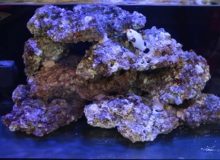
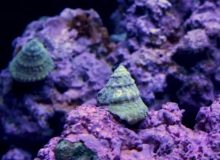
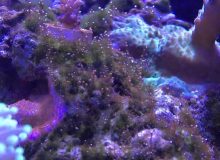
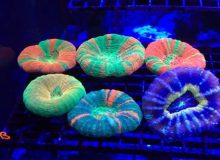
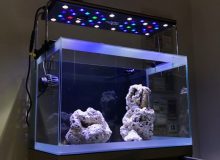
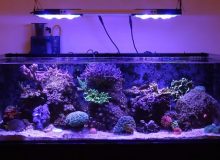
Leave a Reply